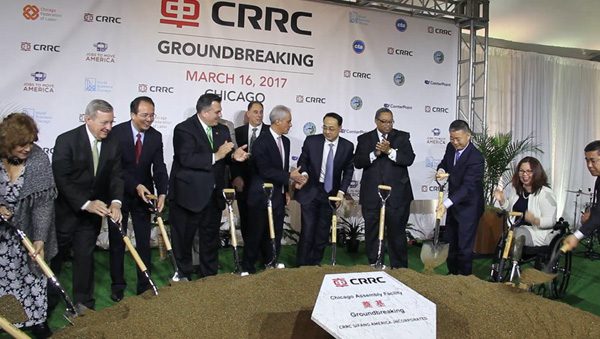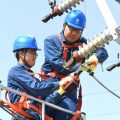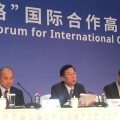
A mockup of the Orange Line car made by Chinese train maker CRRC Corp Ltd made a debut to its future passengers on Monday at City Hall Plaza in Boston. It is the latest victory of the rail car builder to expand the US market.
Since the China-based rail car builder accessed to the US market in 2014, CRRC has grabbed 1,359 subway car and commuter train car orders in Boston, Chicago, Los Angeles and Philadelphia. The past half year witnessed 184 subway car orders in Boston and Los Angeles, as well as 45 commuter train car deals in Philadelphia.
CRRC President Liu Hualong said that the company not only expands the US market, but also boosts China-US cooperation in rail transit.
The manufacturer is building a plant in Springfield of Massachusetts, once the US’ manufacturing base. The city is also where China’s earliest overseas students like Rong Hong and Tien Yow Jeme started their dreams and careers.
When the Springfield plant broke ground on September 3, 2015, an old US man named Mike hang a banner writing “Welcome CRRC” on the wall of his bar to express a greeting to the Chinese maker.
The plant also retained the century-year-old buildings to show a respect to local culture and tradition. The decision was applauded by local residents.
The old industrial cluster located in southeast Chicago recorded the glorious days of the city’s manufacturing industry, but at the same time witnessed the far-flung decline of the country’s “Rust Belt”.
But after Qingdao-based CRRC Sifang Co Ltd came to the land, the railway locomotive manufacturing industry of the city revitalized after 36 years of silence. A ground-breaking ceremony of the maker’s plant was held in the city on March 16.
Rahm Emanuel, mayor of Chicago, held up his thumb for the manufacturer at the ceremony, saying that CRRC can not only serve the city, but provide made-in-Chicago products to more US cities by stretching to the western and central part, and even the whole US market.
“We thank CRRC for bringing the rail car manufacturing projects to Chicago,” he added.
While attending the ceremony with retired brother, Sean Williams said that they have been proud for the subway facilities in Chicago, and will be proud if rail cars assembled in the city could run on rail lines around the world in the near future. His family has been committed to railway locomotive for three generations.
As a hub of dimensional transport, Chicago drives the economic growth of the Greater Chicago region, US Senator Richard J Durbin told the People’s Daily, adding that the city, a manufacturing base of rail cars 50 years ago, now renews its glory thanks to CRRC.
In order to better serve the US market, CRRC decided to set up research and manufacturing centers for rail transit in the US. Its staff were hired and trained in the US as well.
The 418 subway cars to be delivered to Boston will be produced in the Springfield plant that is expected to be completed in 2017. The Chicago facility, upon completion, will build at least 168 subway trains each year. It means the China-made locomotives will be endowed with US descent.
Liu Chengyong, general manager of CRRC Sifang’s American branch, commented that it will rejuvenate the 125-year-old subway system of Chicago, and fuel a common prosperity of the upstream and downstream of the rail transit industry.
Located in 41.8° N, Chicago often flirts with cold weather. To ensure the safety of passengers in such a unique environment, the Chinese maker applies the technologies of the Lanzhou-Xinjiang high-speed railway who is also always threatened by cold fronts.
The company, in Los Angeles, also introduced products made by transportation and equipment accessory manufacturers based in Guangzhou, Shenzhen and other Chinese cities. It, as a result, gave a boost to China’s total export of rail products covering the whole industrial chain.
These companies, by providing automotive, heating, ventilation, air conditioning, lighting equipment to the US rail manufacturing industry, also created more job positions for local community, and as a result broadened the prospects of Chinese firms in the US market.


